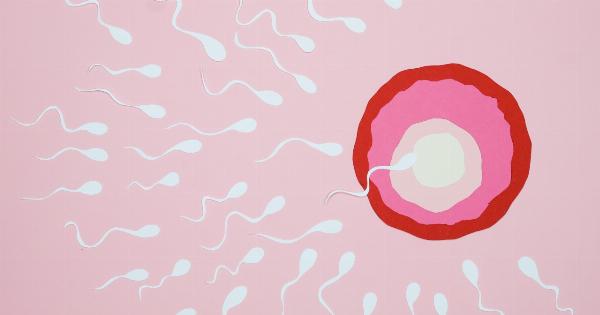Assisted reproductive technology (ART) has revolutionized modern medical science by helping millions of couples conceive and enlarge their families.
IVF, or in-vitro fertilization, is one of the most popular forms of ART that involves fertilizing an egg with sperm outside the body and implanting the resulting embryo in the uterus. Over the years, IVF has become more popular and accessible, resulting in over two million babies born worldwide since 2015. This article discusses the significance of this landmark achievement and the underlying reasons behind it.
What is IVF?
IVF is a reproductive technology that was first introduced in the United Kingdom in 1978, leading to the birth of the world’s first ‘test-tube’ baby, Louise Brown.
The process involves stimulating the ovaries with hormones to produce multiple eggs, retrieving the eggs using a thin needle, and combining them with sperm in a laboratory dish. The fertilized egg forms an embryo, which is then transferred to the uterus to continue its development.
IVF is usually considered as a last resort for couples who have difficulty conceiving naturally or have certain fertility issues like blocked fallopian tubes, low sperm count, or age-related decline.
It can be a costly and time-consuming process with no guarantee of success. The success rate of IVF depends on several factors, including the age of the woman, the quality of eggs and sperm, the number of embryos transferred, and the skill of the fertility clinic.
On average, the success rate of IVF ranges from 30 to 40 percent per embryo transfer.
IVF: A Milestone Achievement in Medical Science
Since Louise Brown’s birth, IVF has come a long way, making it one of the most sought-after fertility treatments worldwide.
According to the International Committee for Monitoring Assisted Reproductive Technologies (ICMART), over eight million babies are born worldwide through IVF and other ARTs. Of these, more than two million babies were born in the last six years, marking a milestone achievement in medical science.
The rise in the number of IVF babies can be attributed to several factors. One of the most significant factors is the rapid advancement in technology and medical knowledge that has improved the safety and efficacy of IVF procedures.
Fertility clinics today have access to better equipment, more sophisticated techniques, and advanced laboratory facilities, resulting in higher success rates. Additionally, the growing awareness about fertility issues and the stigma associated with infertility has led to more people seeking help from fertility clinics.
The Demographics of IVF Babies
In 2015, ICMART reported that over 15,000 IVF treatments were performed worldwide each day, resulting in the birth of over five million babies.
The data also revealed that over 90 percent of IVF babies were born in high-income countries, with Western Europe accounting for the largest share. The United States, Japan, and Australia also reported a high number of IVF births.
According to a recent report published by the Society for Assisted Reproductive Technology (SART), over 284,000 ART cycles were performed in the United States in 2018, resulting in the birth of over 71,000 babies.
The report showed that the majority of ART cycles involved IVF, with a success rate of around 47 percent for women under 35. The average age of women using ART was 36.2 years, reflecting the increasing trend of women delaying childbirth.
In terms of ethnicity, the report revealed that 50.7 percent of ART cycles were performed among white women, followed by Asian (27.9 percent), Hispanic (10.6 percent), Black (6.8 percent), and other races (4 percent).
Challenges and Controversies Surrounding IVF
Despite the many benefits of IVF, it continues to face several challenges and controversies. One of the main challenges is the cost of the treatment, which is often not covered by health insurance.
IVF can cost anywhere from $10,000 to $20,000 per cycle, making it unaffordable for many couples. This has led to a disparity in access to IVF services, with only the affluent being able to pursue the treatment.
Another challenge is the psychological impact of IVF on the patients and their families. The process can be emotionally and physically draining, leading to stress, anxiety, and depression.
Some couples may also find it difficult to cope with the uncertainties and failures associated with IVF, leading to strain in their relationships.
IVF has also been a subject of controversy due to ethical concerns surrounding the creation and disposal of embryos.
Some people argue that creating embryos outside the womb and discarding those that are not needed is morally wrong and a form of embryonic genocide. Others argue that families should have the right to decide what to do with their embryos, including donation for research purposes or discarding them.
The Future of IVF
The continued success of IVF and other ARTs has opened up new possibilities for the future of human reproduction.
With advancements in technology, it is now possible to screen embryos for genetic diseases, ensuring healthy pregnancies and reducing the risk of passing on hereditary disorders. The use of donor eggs, sperm, or embryos has also become more common, allowing couples with infertility issues to conceive.
IVF has also paved the way for assisted reproduction technologies like intracytoplasmic sperm injection (ICSI), which involves injecting a single sperm directly into an egg, and pre-implantation genetic diagnosis (PGD), which involves testing embryos for genetic abnormalities. These technologies have expanded the scope of fertility treatments and improved the success rates.
Conclusion
Over the last six years, IVF has helped bring over two million babies into the world, marking a significant milestone in the history of medical science.
The rise in IVF babies can be attributed to several factors, including the availability of better technology and medical knowledge, increased awareness of fertility issues, and decreasing stigma associated with infertility. However, the treatment continues to face several challenges and controversies, including high costs, psychological impact, and ethical concerns.
Regardless, the future of IVF and other assisted reproductive technologies looks promising, offering hope to millions of couples who dream of starting a family.






























